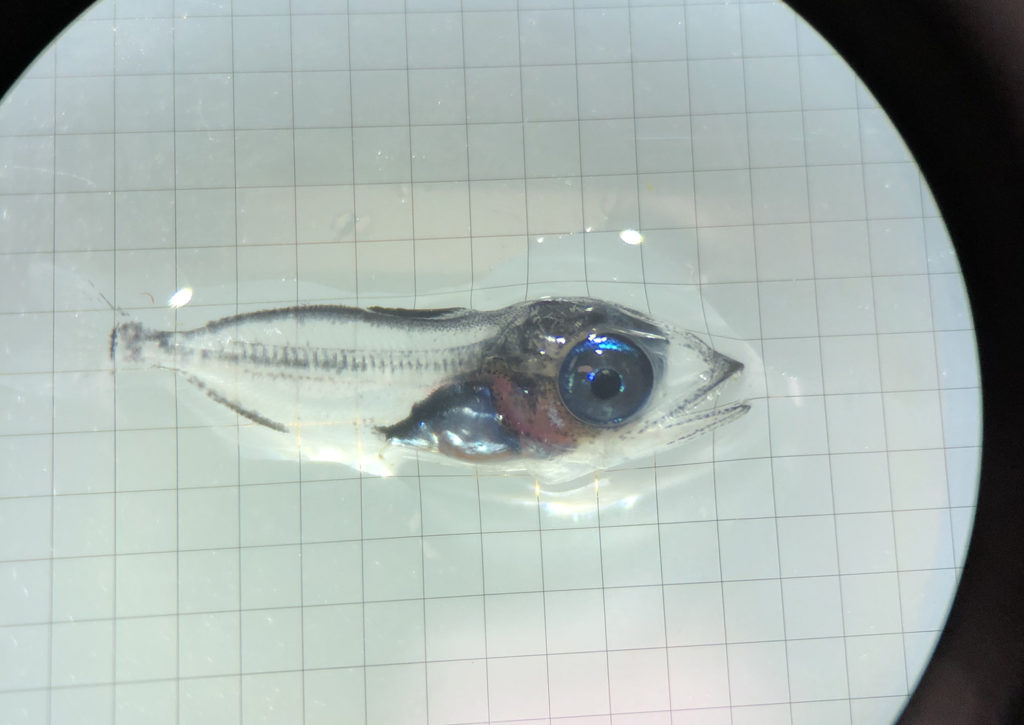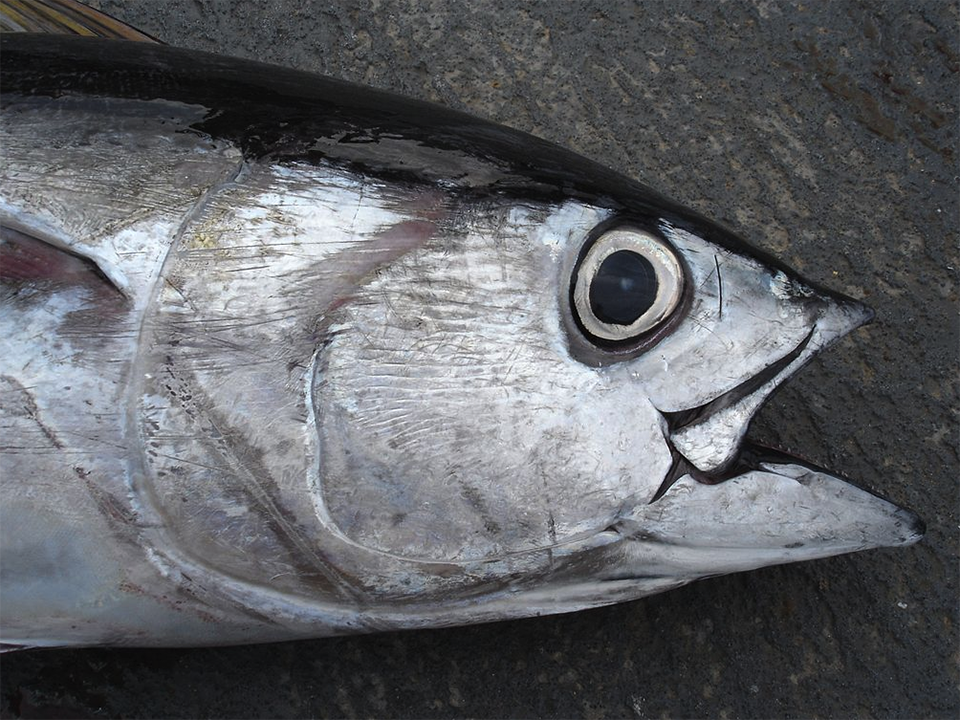The uncertainty of the estimated growth curves increased with increasing aging errors

In fishery stock assessment, growth functions are used to provide weight-at-age and length-at-age data for age-structured stock assessment models. Various types of growth models have been developed, and their performance and applicability often vary among different species and populations. In general, the Von Bertalanffy growth function (a growth curve commonly used to model mean length from age in animals) is the most widely applied model in fishery stock assessment, especially among global tuna stocks.
The estimation of growth parameters requires accurate measurement of age and length/weight. The measurement of the length and weight is straightforward, while age is often measured by counting deposited growth increments resulted from seasonal changes as the fish grows, such as otoliths (a calcium carbonate structure in the inner ear of vertebrates), dorsal fin spines, vertebrae and teeth. However, the age estimated from hard tissues could be inaccurate. External hard tissues of the fish, such as teeth and scales, may be damaged or lost, and the rate of the deposition of growth bands on different hard tissues varies and may fade away. As a result, interpreting increments of different hard tissues from the same individual may give different results due to structural differences.
Tunas are ecologically and economically important species that are widely distributed in tropical, subtropical and temperate oceans. The sustainable exploitation of global tuna fisheries resources relies on rigorous stock assessment and effective fishery management. Currently, the stock assessment models of major tuna stocks mostly require growth function to obtain the catch-at-age information. Tuna ages are mainly estimated by otoliths, fin spines, vertebrae and scales, and otoliths can provide more accurate aging results. However, the aging errors in otolith analysis are still significant. Various numerical methods, e.g., bootstrapping, were used to evaluate the uncertainty of estimating growth parameters when aging errors were found, but studies regarding estimation uncertainty associated with limited age range are still rare.
This article summarizes the original publication (Lu, D. et al. 2023. Effects of Aging Uncertainty on the Estimation of Growth Functions of Major Tuna Species. Fishes 2023, 8(3), 131) reporting on research that used simulations to study how the combinations of aging errors and sampled age ranges affected the estimation of Von Bertalanffy growth curves of five important tuna species. The species considered in this study were southern bluefin tuna (Thunnus maccoyii), albacore tuna (T. alalunga), yellowfin tuna (T. albacares), bigeye tuna (T. obesus) and skipjack tuna (Katsuwonus pelamis).
Additional information on the computer simulation comprising operating models, observation models, estimation models and evaluation models to study the effects of aging error and age range on estimation accuracy of growth parameters is available in the original publication.
Results and discussion
The growth parameters estimated for the same species, or even population, could be different among studies and these differences were evident in the majority of tuna growth studies, which may be caused by changing fish-growth patterns due to environmental and anthropogenic effects (e.g., climate change, fishing, ecosystem change, etc.). Aging error is inevitable, regardless of the methods used for aging.
Analysis of length–frequency data, tagging–recapture studies and interpretation of hard tissues are major methods for interpreting age in tuna species. Growth increments formed on hard tissues can provide more accurate age interpretation than length–frequency and tagging–recapture studies and this method also has the advantage of convenient sampling. However, differences between hard tissues can affect the difficulty and accuracy of age interpretation.
We simulated the effects of different aging errors on the estimation of growth curves. We discovered that as the aging error increased, so did the uncertainty of estimated growth parameters. Because errors in the interpreting process can affect the estimation of parameters, uncertainty must be taken into account in age interpretation. However, the accuracy and level of uncertainty of identification vary due to the different techniques or hard tissues in some traditional growth studies, which is why there was a large bias among previous studies.
In our study, we found that when accuracy is ensured, parameters may be unaffected by age range, but it is an idealized state; i.e., the increments on hard tissues are clearly rendered and accurately interpreted by different trained personnel. Obtaining such a growth estimation is particularly challenging since it involves not only a highly defined set of interpretation criteria but also a high level of expertise gained via extensive training.
We found that some growth parameters of skipjack tuna had greater estimation errors when only young groups were sampled, regardless of the levels of aging error, which is probably related to their growth rate, as skipjack tuna is known to be the “fastest-growing” of tuna species. There are numerous growth studies of skipjack tuna with large variations of growth parameters, even with the use of otolith daily aging.
Many growth studies attempt to increase sample size and include as many age groups as possible so that more representative length-at-age data can be obtained. Using these data for growth estimation can reduce the estimation uncertainty. When the sample size is small, the uncertainty of parameter estimation increases, and using the mean length of each age can appropriately reduce the effect of observation error. There is some variation in the parameters estimated by the dataset and average length-at-age, but with improved fishery management and access to data, the large sample approach becomes more appropriate for studying the growth of tuna.
The simulation analysis used in the present study is another approach to quantify estimation uncertainty and errors, which can be used to test the sensitivity of results to different types of aging uncertainties. Although numerous methods exist, no single method can fully account for aging uncertainty in growth studies. Therefore, a combination of multiple methods is needed to increase the accuracy in estimating growth curves.
Growth information is critical for conducting accurate stock assessments and can be used to construct age compositions of populations to improve the results of stock assessments. Age structure and individual size can be used to assess the population status, and the change of increments in hard tissues can be used to analyze whether the population is affected by environmental changes.
Some researchers have reported that growth rates and longevity were the best predictors of changes in population resources. However, there is uncertainty in estimating growth by hard tissues, and the age structure may be truncated as fishing intensity increases, resulting in large changes in the estimates of these parameters.
Fishery stock assessment results are sensitive to changes in growth parameters, which have a direct impact on estimates of fishing mortality and reproduction and are ultimately used to infer stock status and biological reference points. Along with the input of growth parameters, uncertainties in the process of age identification can be transferred to the resource assessment, making the estimates of the total allowable catch (TAC) too optimistic for short-term management of the stock. A combination of different age identification methods, such as tag–recapture and length–frequency data is the most direct and effective way to verify growth and reduce the influence of inherent uncertainties from hard tissues.
Most of the world’s tuna stocks are fully exploited or overexploited, but the human demand for tuna continues to grow. We need to maintain the balance between economic development and the sustainable exploitation of fish stocks, particularly for tuna species with high economic value (e.g., bluefin tuna and bigeye tuna). Therefore, in addition to obtaining more accurate growth estimation for effective stock assessment, regional fisheries management organizations (RFMOs) should pay more attention to protecting age structure, which is important for maintaining the productivity and stability of populations.
Perspectives
Simulation was used to examine the effects of aging error and age range on the estimation of growth parameters in five tuna species. Both factors influenced the uncertainty of growth estimation, with the sampling age range having a greater impact on growth parameter estimation. As a result, future studies should focus on improving the accuracy of age interpretation and expanding the sampled age range to reduce uncertainty in the process of growth estimation, which will also improve assessment accuracy.
Now that you've reached the end of the article ...
… please consider supporting GSA’s mission to advance responsible seafood practices through education, advocacy and third-party assurances. The Advocate aims to document the evolution of responsible seafood practices and share the expansive knowledge of our vast network of contributors.
By becoming a Global Seafood Alliance member, you’re ensuring that all of the pre-competitive work we do through member benefits, resources and events can continue. Individual membership costs just $50 a year.
Not a GSA member? Join us.
Author
-
Dr. Fan Zhang
Corresponding author
College of Marine Sciences, Shanghai Ocean University, Shanghai 201306, China[110,99,46,117,100,101,46,117,111,104,115,64,103,110,97,104,122,45,102]
Tagged With
Related Posts

Innovation & Investment
‘Not convinced it can’t be done’: A look inside California’s new bluefin tuna hatchery
San Diego-based bluefin tuna hatchery and feed company Ichthus Unlimited aims to make tuna ranching a more sustainable and reliable option.

Fisheries
Fisheries in Focus: Tunas and billfishes are improving on the IUCN Red List – and it’s thanks to effective fisheries management
Sustainable Fisheries UW offers a rundown of the IUCN Red List and how tunas and billfishes benefit from strong fisheries management.

Fisheries
Fisheries in Focus: Marine protected areas don’t help tuna population, new paper shows
Using stock assessment and fishing data, researchers find that the Phoenix Islands Protected Area did not meaningfully increase the tuna population.

Fisheries
‘They need a good reason to stay’: How one coalition may break a decade of deadlock in the North Atlantic mackerel fishery
GOAL 2022: The North Atlantic Pelagic Advocacy Group, led by Dr. Tom Pickerell, is a finalist for GSA’s inaugural Global Fisheries Innovation Award.



